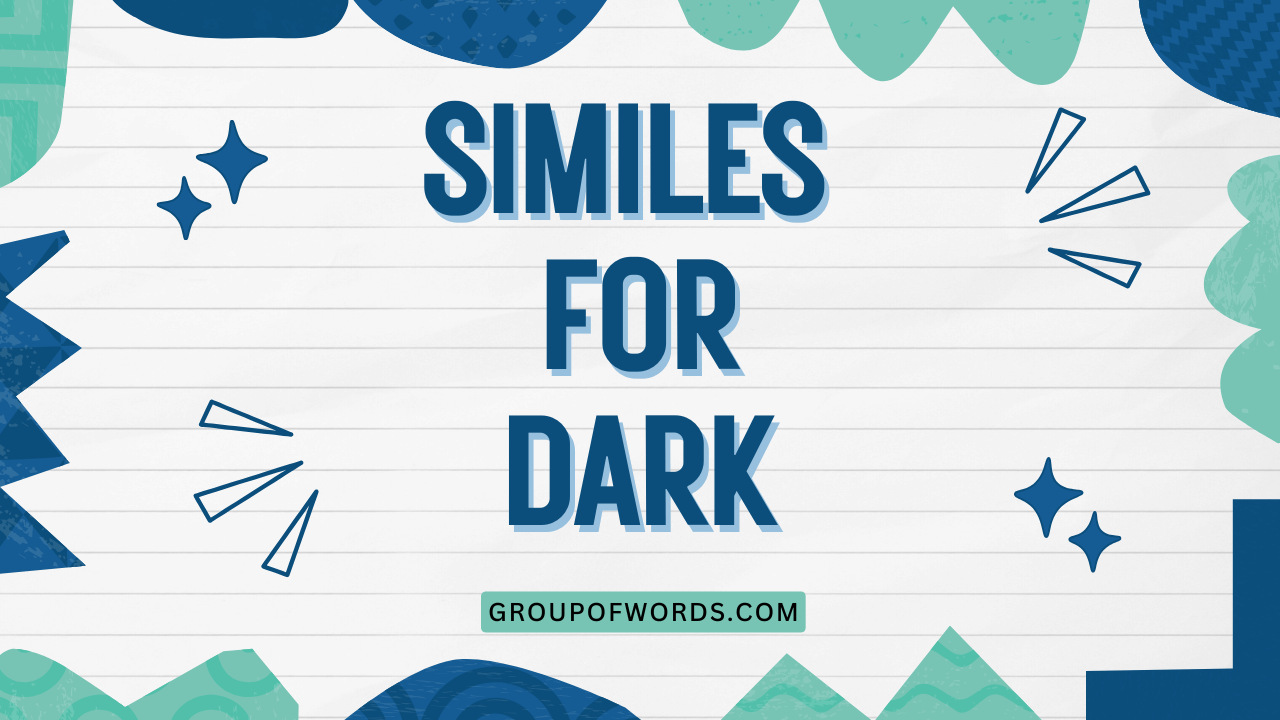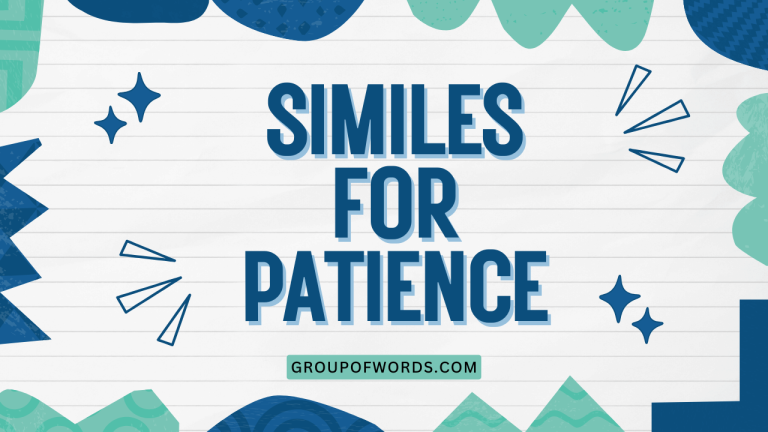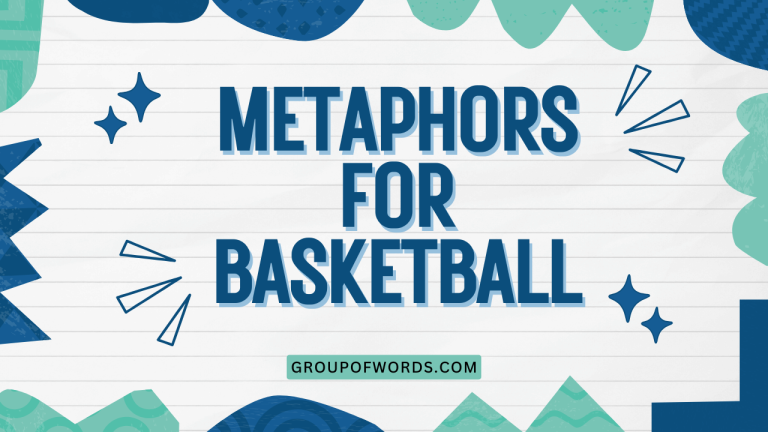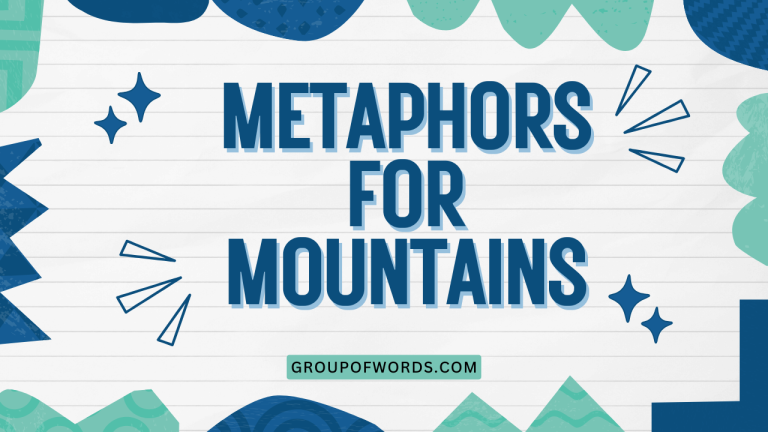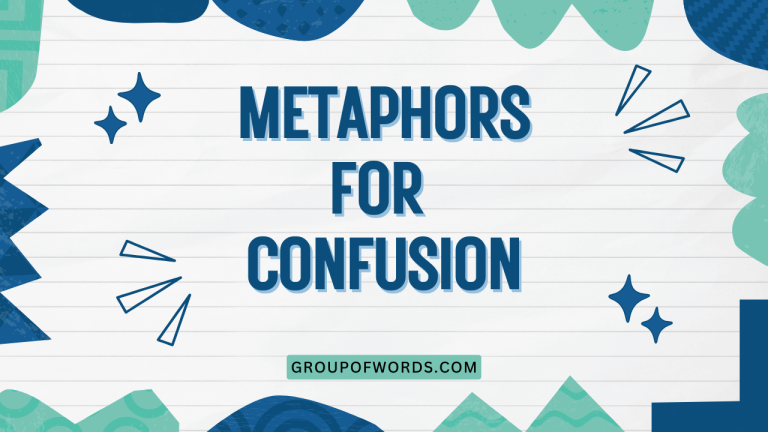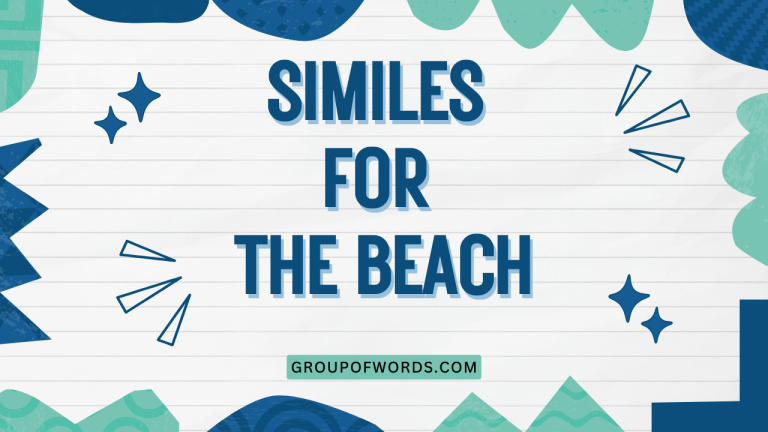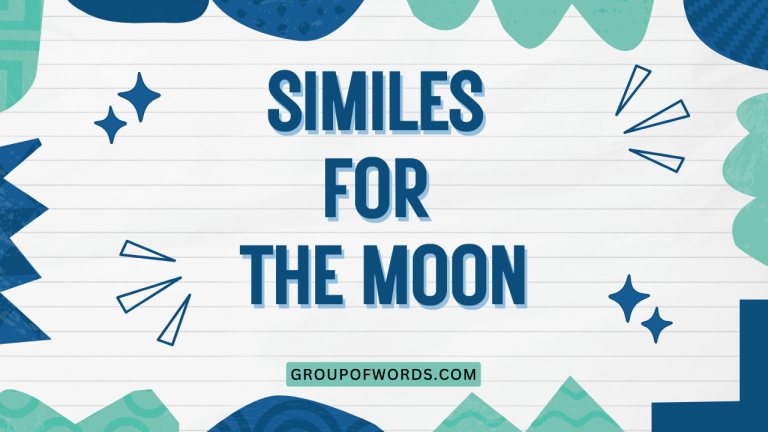Similes for Dark: A Comprehensive Guide to Figurative Language
Similes are powerful tools in the English language, allowing writers and speakers to create vivid imagery and enhance descriptions. Understanding how to use similes effectively, particularly when describing abstract concepts like darkness, is crucial for mastering figurative language.
This article provides an in-depth exploration of similes for “dark,” covering their definition, structure, types, usage rules, common mistakes, and advanced applications. Whether you’re a student, writer, or language enthusiast, this guide will equip you with the knowledge and skills to use similes for “dark” with confidence and precision.
Table of Contents
- Definition of Similes for Dark
- Structural Breakdown of Similes
- Types and Categories of Similes for Dark
- Examples of Similes for Dark
- Usage Rules for Similes
- Common Mistakes When Using Similes
- Practice Exercises
- Advanced Topics in Similes
- Frequently Asked Questions
- Conclusion
Definition of Similes for Dark
A simile is a figure of speech that directly compares two different things using the words “like” or “as.” The purpose of a simile is to create a more vivid and descriptive image in the reader’s or listener’s mind by drawing a parallel between the object being described and something else that is more familiar or easily understood. When applied to the concept of “dark,” similes help to convey the intensity, quality, or effect of darkness by comparing it to other dark things or situations.
Similes can be classified as either explicit or implicit. Explicit similes use “like” or “as” directly, while implicit similes, often found in more poetic or nuanced writing, imply a comparison without using these words. However, for the purpose of this article, we’ll primarily focus on explicit similes using “like” and “as” to describe darkness.
The function of similes for dark is to evoke specific emotions or sensations associated with darkness. For example, a simile might compare darkness to the void to emphasize its emptiness or to a heavy blanket to suggest its oppressive nature.
The context in which a simile is used also plays a significant role in how it is interpreted. A simile used in a horror story will likely evoke fear, while one used in a comforting poem might suggest peace and tranquility.
Structural Breakdown of Similes
The basic structure of a simile consists of three key components: the subject, the linking word (“like” or “as”), and the object of comparison. The subject is the thing being described (in this case, “dark”). The linking word establishes the comparison, and the object of comparison provides a point of reference to enhance the description.
Let’s break down an example: “The night was as dark as coal.” Here, “the night” is the subject, “as” is the linking word, and “coal” is the object of comparison. This structure allows us to create a clear and understandable comparison, making the description more impactful.
Understanding this structure is crucial for creating effective similes. By carefully choosing the object of comparison, you can control the specific image or feeling that the simile evokes.
The more relevant and evocative the comparison, the more powerful the simile will be.
Types and Categories of Similes for Dark
Similes for “dark” can be categorized based on the specific aspect of darkness they emphasize. Here are some common categories:
1. Similes Emphasizing Intensity
These similes focus on the degree or strength of the darkness. They often use comparisons to things that are known for being extremely dark or impenetrable.
2. Similes Emphasizing Texture or Quality
These similes describe the feel or nature of the darkness, such as whether it is thick, heavy, or oppressive. They may compare the darkness to tangible objects or sensory experiences.
3. Similes Emphasizing Emotional Impact
These similes focus on the feelings or emotions that the darkness evokes, such as fear, loneliness, or peace. They often use comparisons to situations or experiences that are associated with these emotions.
4. Similes Emphasizing Visual Characteristics
These similes describe how the darkness looks, such as its color, depth, or obscurity. They may compare the darkness to objects or scenes that have similar visual qualities.
Examples of Similes for Dark
Here are some examples of similes for “dark,” organized by the categories described above. Each table will contain at least 20-30 different examples.
These examples demonstrate the wide range of possibilities when using similes to describe darkness.
Table 1: Similes Emphasizing Intensity
This tables showcases examples of similes that emphasize the degree or strength of the darkness.
| Simile | Explanation |
|---|---|
| As dark as pitch | Pitch is a very dark, sticky substance, emphasizing the depth of the darkness. |
| As dark as the abyss | The abyss suggests an immeasurable depth of darkness. |
| As dark as a moonless night | A moonless night is devoid of light, highlighting the complete absence of illumination. |
| As dark as the inside of a cave | Caves are typically very dark, especially deep inside. |
| As dark as a raven’s wing | Ravens are known for their deep black color. |
| As dark as my mood | This compares the darkness to a feeling of sadness or depression. |
| As dark as space itself | Outer space is often perceived as an infinite void of darkness. |
| As dark as a closed eyelid | This emphasizes the absence of light. |
| As dark as a shadow creeping across the wall | A shadow suggests an encroaching darkness. |
| As dark as a bottomless well | A bottomless well suggests an infinite depth of darkness. |
| As dark as the devil’s heart | This implies a sinister and profound darkness. |
| As dark as the void before creation | This refers to a primordial darkness, suggesting a complete absence of light. |
| As dark as the depths of the ocean | The deep ocean is a place where sunlight doesn’t penetrate. |
| As dark as a sealed tomb | Tombs are enclosed and devoid of light. |
| As dark as a bruise forming on skin | A bruise’s dark color signifies damage and depth. |
| As dark as a secret never told | This compares the darkness to something hidden and unknown. |
| As dark as the absence of hope | This links darkness to a feeling of despair. |
| As dark as the ink on a page | Ink is typically very dark, emphasizing the depth of the darkness. |
| As dark as a panther in the night | Panthers are stealthy and blend seamlessly into the darkness. |
| As dark as the future felt | This compares the darkness to uncertainty and anxiety. |
| As dark as a starless sky | A sky without stars is completely devoid of light. |
| As dark as a burnt offering | This evokes an image of something completely consumed by darkness. |
| As dark as the grave | This implies a final and inescapable darkness. |
| As dark as the space between galaxies | The vast emptiness between galaxies is characterized by extreme darkness. |
| As dark as a locked room with no windows | This emphasizes the confinement and lack of light. |
Table 2: Similes Emphasizing Texture or Quality
This table presents similes that describe the feel or nature of the darkness, focusing on its texture or quality.
| Simile | Explanation |
|---|---|
| Like a thick blanket of darkness | This suggests a heavy, enveloping darkness. |
| Like a velvet curtain of night | This evokes a sense of smooth, luxurious darkness. |
| Like a suffocating cloak of shadow | This implies an oppressive and restrictive darkness. |
| Like a heavy fog of gloom | This suggests a dense, pervasive darkness. |
| Like a sticky tar of night | This evokes a sense of clinging, inescapable darkness. |
| Like a dense cloud of despair | This compares the darkness to a feeling of hopelessness. |
| Like a shroud wrapped around the world | This paints a picture of darkness covering everything. |
| Like a cold, damp embrace | This suggests an uncomfortable and chilling darkness. |
| Like a suffocating presence | This implies the darkness is overbearing and hard to escape. |
| Like a silent intruder | This suggests the darkness creeps in unnoticed. |
| Like a heavy weight on the soul | This compares the darkness to emotional burden. |
| Like a thick soup you can’t see through | This emphasizes the impenetrability of the darkness. |
| Like a murky pond reflecting nothing | This suggests a dull, lifeless darkness. |
| Like a spider’s web, trapping the light | This implies the darkness captures and holds onto the light. |
| Like a leaden sky pressing down | This evokes a sense of oppressive weight. |
| Like a canvas painted with shadows | This suggests a darkness composed of varying shades. |
| Like a river of ink flowing through the streets | This paints a picture of a dark, fluid movement. |
| Like a comforting arm around the shoulders | This shows that darkness can sometimes be comforting. |
| Like a deep breath held too long | This implies a sense of tension and suspense. |
| Like a dream you can’t quite remember | This suggests a mysterious and elusive darkness. |
| Like a secret whispered in the ear | This evokes a sense of intimacy and mystery. |
| Like a memory fading away | This compares the darkness to something slowly disappearing. |
| Like a closed book with untold stories | This suggests a hidden and unknown darkness. |
| Like a shadow that follows you everywhere | This implies a constant and inescapable darkness. |
| Like a mirror reflecting only emptiness | This suggests a barren and desolate darkness. |
Table 3: Similes Emphasizing Emotional Impact
This table provides examples of similes that focus on the feelings or emotions evoked by darkness.
| Simile | Explanation |
|---|---|
| Like a fear gripping the heart | This suggests that the darkness evokes a sense of terror. |
| Like a loneliness settling in the soul | This implies that the darkness brings about feelings of isolation. |
| Like a peace descending upon the world | This suggests a sense of calm and tranquility in the darkness. |
| Like a sadness clinging to the air | This evokes a feeling of melancholy and sorrow. |
| Like a mystery unfolding slowly | This suggests a sense of intrigue and anticipation. |
| Like a weight pressing down on the chest | This compares the darkness to oppression or anxiety. |
| Like a silent scream trapped inside | This implies a suppressed fear or pain. |
| Like a ghost haunting the edges of vision | This evokes a sense of unease and paranoia. |
| Like a secret you can’t tell | This compares the darkness to hidden knowledge. |
| Like a truth you can’t face | This suggests the darkness is associated with something difficult. |
| Like a memory you can’t escape | This implies the darkness is inescapable and haunting. |
| Like a dream you can’t wake from | This evokes a sense of helplessness and disorientation. |
| Like a shadow lurking in the corner | This suggests a hidden threat or fear. |
| Like a whisper you can’t understand | This implies a mysterious and unsettling presence. |
| Like a question with no answer | This compares the darkness to uncertainty and doubt. |
| Like a void where hope disappears | This suggests a complete absence of positivity. |
| Like a prison cell with no light | This evokes a sense of confinement and despair. |
| Like a maze with no exit | This implies a feeling of being lost and trapped. |
| Like a storm brewing on the horizon | This suggests an impending sense of dread. |
| Like a ticking clock counting down | This evokes a sense of anxiety and anticipation. |
| Like a puppet dancing on strings | This implies a loss of control and helplessness. |
| Like a mask hiding a painful truth | This suggests a concealed sadness or trauma. |
| Like a wound that never heals | This compares the darkness to lingering pain. |
| Like a song sung in a minor key | This evokes a feeling of sadness and melancholy. |
| Like a painting done in shades of gray | This suggests a lack of vibrancy and joy. |
Table 4: Similes Emphasizing Visual Characteristics
This table lists similes that describe the appearance of darkness, focusing on its visual qualities.
| Simile | Explanation |
|---|---|
| Like a black hole swallowing light | This suggests an all-consuming darkness. |
| Like a charcoal drawing smudged and blurred | This evokes a sense of indistinctness and obscurity. |
| Like an ink stain spreading across paper | This suggests a pervasive and encroaching darkness. |
| Like a shadow stretching long and thin | This implies a deceptive and elongated darkness. |
| Like a silhouette against the moon | This evokes a sense of mystery and contrast. |
| Like a tunnel with no end in sight | This suggests a long and unending darkness. |
| Like a night sky without a single star | This implies a complete absence of light. |
| Like a canvas painted black | This suggests a uniform and impenetrable darkness. |
| Like a pool of oil shimmering in the dark | This evokes a sense of oily, reflective darkness. |
| Like a raven perched on a gravestone | This suggests a dark and ominous presence. |
| Like a cave mouth yawning open wide | This evokes a sense of vast and unknown darkness. |
| Like a cloak draped over the world | This suggests a widespread and enveloping darkness. |
| Like a curtain drawn across the stage | This implies a sudden and complete darkness. |
| Like a shroud covering a lifeless body | This evokes a sense of death and finality. |
| Like a film negative reversed and inverted | This suggests an altered and distorted darkness. |
| Like a mirror reflecting only shadows | This implies a distorted and unsettling darkness. |
| Like a photograph faded with age | This suggests a blurred and indistinct darkness. |
| Like a charcoal sketch incomplete | This evokes a sense of unfinished and unresolved darkness. |
| Like a landscape shrouded in mist | This suggests a mysterious and obscured darkness. |
| Like a forest where the sun never shines | This implies a perpetual and inescapable darkness. |
| Like a room with boarded-up windows | This evokes a sense of confinement and isolation. |
| Like a well so deep you can’t see the bottom | This suggests an immeasurable and unknown darkness. |
| Like a secret hidden in plain sight | This implies a deceptive and elusive darkness. |
| Like a dream that slips away as you wake | This evokes a fleeting and intangible darkness. |
| Like a memory fading with time | This suggests a gradual and diminishing darkness. |
Usage Rules for Similes
Using similes effectively requires adherence to certain rules. Here are some key guidelines:
- Ensure Relevance: The object of comparison should be relevant to the subject being described. The comparison should enhance understanding or create a more vivid image.
- Avoid Clichés: Overused similes can weaken your writing. Strive for originality and creativity.
- Maintain Clarity: The comparison should be clear and easy to understand. Avoid obscure or overly complex references.
- Consider Context: The context in which the simile is used will influence its interpretation. Ensure the simile is appropriate for the tone and style of your writing.
- Use Sparingly: Overuse of similes can make your writing feel forced or unnatural. Use them judiciously to enhance specific descriptions.
Exceptions: While originality is generally encouraged, some established similes can be effective if used in the right context. However, it’s important to be aware of the potential for clichés and to use them with caution.
Common Mistakes When Using Similes
Here are some common mistakes to avoid when using similes:
| Incorrect | Correct | Explanation |
|---|---|---|
| The dark was like a car. | The dark was like a suffocating blanket. | The comparison is irrelevant. Cars don’t evoke darkness. |
| The dark was as dark as night. | The dark was as dark as pitch. | This is redundant. “Night” is already associated with darkness. |
| The dark was as confusing as quantum physics. | The dark was as confusing as a maze. | The comparison is too complex for general understanding. Quantum physics is not a universally understood concept. |
| The dark was like, you know, really dark. | The dark was like a bottomless pit. | The simile lacks precision and creativity. |
Practice Exercises
Test your understanding of similes for “dark” with these exercises.
Exercise 1: Fill in the Blanks
Complete the following sentences with appropriate similes for “dark.”
| Question | Answer |
|---|---|
| 1. The forest was ________, and I couldn’t see a thing. | 1. The forest was as dark as a tomb, and I couldn’t see a thing. |
| 2. Her mood was ________ after receiving the bad news. | 2. Her mood was as dark as a stormy night after receiving the bad news. |
| 3. The room was ________, making it hard to find the light switch. | 3. The room was like a cave, making it hard to find the light switch. |
| 4. The water in the well was ________, hiding its secrets. | 4. The water in the well was as dark as ink, hiding its secrets. |
| 5. The sky was ________, without a single star in sight. | 5. The sky was as dark as a void, without a single star in sight. |
| 6. The alleyway was ________, and I felt a shiver down my spine. | 6. The alleyway was like a black hole, and I felt a shiver down my spine. |
| 7. His future seemed ________, filled with uncertainty and fear. | 7. His future seemed as dark as a shadow, filled with uncertainty and fear. |
| 8. The coffee was ________, just the way I liked it. | 8. The coffee was as dark as midnight, just the way I liked it. |
| 9. The secret was ________, hidden deep within her heart. | 9. The secret was as dark as a buried treasure, hidden deep within her heart. |
| 10. The night was ________, perfect for stargazing if there were any stars. | 10. The night was like a velvet curtain, perfect for stargazing if there were any stars. |
Exercise 2: Identify the Category
Identify the category of each simile (Intensity, Texture/Quality, Emotional Impact, Visual Characteristics).
| Simile | Category |
|---|---|
| 1. As dark as a fear gripping the heart | 1. Emotional Impact |
| 2. Like a thick blanket of darkness | 2. Texture/Quality |
| 3. As dark as the abyss | 3. Intensity |
| 4. Like a black hole swallowing light | 4. Visual Characteristics |
| 5. Like a loneliness settling in the soul | 5. Emotional Impact |
| 6. Like a sticky tar of night | 6. Texture/Quality |
| 7. As dark as a moonless night | 7. Intensity |
| 8. Like a shadow stretching long and thin | 8. Visual Characteristics |
| 9. Like a peace descending upon the world | 9. Emotional Impact |
| 10. Like a velvet curtain of night | 10. Texture/Quality |
Advanced Topics in Similes
For advanced learners, exploring the subtleties and nuances of simile usage can further enhance their writing skills. This includes understanding how to create extended similes, which involve developing a single comparison over multiple sentences or paragraphs. This technique allows for a more detailed and impactful description.
Another advanced topic is the use of implied similes, where the comparison is not explicitly stated but rather suggested through imagery and metaphor. This requires a deeper understanding of figurative language and the ability to create subtle yet effective comparisons.
Additionally, studying the works of renowned authors who are masters of simile usage can provide valuable insights and inspiration. Analyzing how they craft their similes and the effects they achieve can help you develop your own unique style and voice.
Frequently Asked Questions
- What is the difference between a simile and a metaphor?
A simile compares two things using “like” or “as,” while a metaphor states that one thing is another thing. For example, “The dark was like a blanket” is a simile, whereas “The dark was a blanket” is a metaphor.
- Can a simile be too obvious?
Yes, a simile can be too obvious if it uses a comparison that is already strongly associated with the subject being described. This can make the simile feel redundant and uninspired. Strive for originality and creativity in your comparisons.
- How can I avoid using clichés in my similes?
To avoid clichés, try to think outside the box and come up with unique and unexpected comparisons. Consider using sensory details or personal experiences to make your similes more vivid and memorable. Read widely and pay attention to how other writers use figurative language.
- Is it possible to overuse similes in writing?
Yes, overuse of similes can make your writing feel forced and unnatural. Use similes judiciously to enhance specific descriptions, rather than relying on them as a crutch. Quality is more important than quantity.
- How important is context when using similes?
Context is crucial when using similes. The meaning and impact of a simile will depend on the specific context in which it is used. Consider the tone, style, and audience of your writing when choosing your comparisons.
- What makes a simile effective?
An effective simile is relevant, clear, and original. It should enhance understanding or create a more vivid image in the reader’s mind. It should also be appropriate for the context in which it is used.
- Can similes be used in all types of writing?
Similes can be used in many types of writing, including fiction, poetry, and creative nonfiction. However, they may not be appropriate for all types of writing, such as technical or scientific writing, where clarity and precision are paramount.
- How can I improve my ability to create effective similes?
To improve your ability to create effective similes, practice writing regularly and experiment with different comparisons. Read widely and pay attention to how other writers use figurative language. Seek feedback from others and be open to constructive criticism.
Conclusion
Mastering similes for “dark” is an enriching journey that elevates your command of the English language. By understanding the definition, structure, types, and usage rules of similes, you can craft vivid and impactful descriptions that resonate with your audience.
Avoiding common mistakes and practicing regularly will hone your skills and allow you to express yourself with greater creativity and precision.
Remember, the key to effective simile usage lies in relevance, originality, and context. By carefully choosing your comparisons and using them judiciously, you can transform your writing from ordinary to extraordinary.
Embrace the power of figurative language and unlock the full potential of your expressive abilities. Happy writing!
